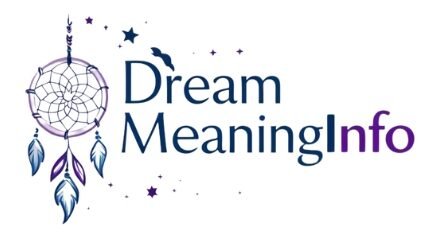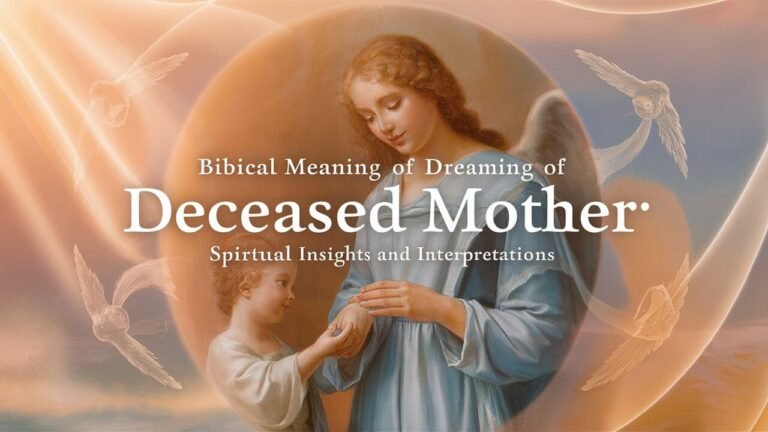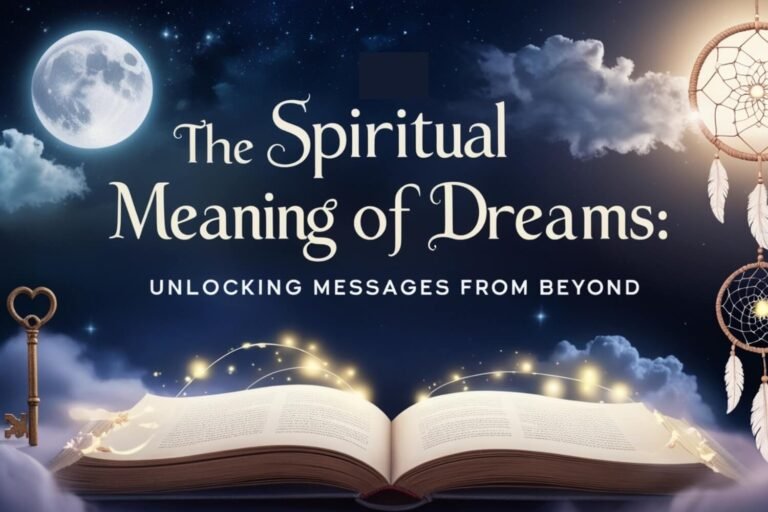The Meaning of Demonic Dreams: Unraveling Nighttime Terrors

Nightmares are common, with 70% of adults saying they’ve had one. The National Sleep Foundation reports this. A scary part is dreams with demons or evil themes. About 20% of people with frequent nightmares have these dreams, the American Psychological Association says.
Even kids, aged 3-12, can have nightmares with demons. A study in the Journal of Clinical Child Psychology found 15% of them do. These dreams can really affect someone’s life.
25% of nightmare sufferers look for help, research shows. 10% of those with recurring demonic nightmares have a sleep disorder, the American Academy of Sleep Medicine reports. Also, 30% of those with demonic dreams have anxiety, a study in the Journal of Sleep Research found.
These nightmares are more than just dreams. They show the need to understand their meaning. Let’s dive into the world of demonic dreams. We’ll look at the difference between nightmares and night terrors. We’ll also explore the symbols and the spiritual and psychological sides of these dreams.
Demonic Dreams vs Night Terrors: Core Distinctions
Demonic dreams and night terrors both cause intense fear. But they are different in many ways. Understanding these differences helps us see how unique each experience is.
Physical Manifestations During Episodes
Night terrors happen when we’re not dreaming and show signs like screaming and sweating. People having night terrors seem awake but can’t talk clearly. On the other hand, demonic dreams, which occur when we dream, might not cause physical reactions. But they can make us feel very upset when we wake up.
Sleep Stage Classifications
The main difference is where they happen in our sleep. Nightmares, including those with demons, happen in the REM sleep stage. Night terrors occur in the non-REM stage. Knowing this helps us understand the brain’s role in our dreams.
Memory Retention Differences
How well we remember these experiences also differs. People with night terrors usually don’t remember anything in the morning. But those who dream about demons often remember every detail. This difference affects how we deal with and understand our dreams.
The Symbolism Behind Demonic Figures in Dreams
Dreams with demonic figures often show us what’s going on in our minds. These visions can point to inner struggles, hidden feelings, or unfinished business. Demons in dreams might symbolize parts of ourselves we hide or deny.
Dreams about demons can also show our fears, worries, guilt, or moral questions. These beings might mirror outside pressures or challenges we face. Dreams of demons can also hint at future health issues or personal growth.
It’s important to look at the context and feelings in demonic dreams. Whether demons are seen as enemies, meeting us, haunting us, or taking over, they reveal our inner world. They show how our thoughts, feelings, and experiences mix together.
Understanding demonic dream symbols can help us know ourselves better. It can guide us through our personal battles. This journey into our subconscious can lead to growth, healing, and spiritual change.
The Science of Non-REM Sleep and Spiritual Encounters
The sleep cycle has four stages of non-rapid eye movement (NREM) sleep, followed by REM sleep. In the deeper stages, like 3 and 4, the brain is less active. This could be a time for spiritual experiences.
Brain Activity Patterns During Terrors
Night terrors happen in the deeper NREM sleep stages. They might show a stronger spiritual connection. The brain’s reduced activity could make the mind more sensitive to threats.
This can lead to intense fear and physical signs like rapid heart rate and heavy breathing.
Neurological Response to Fear
The brain’s fear response in non-REM sleep is different from when we’re awake. The amygdala, key for emotions, is more active during night terrors. This triggers a strong reaction, including fast heart rate and heavy breathing.
Sleep Cycle Impact on Dream Content
The sleep cycle affects what we dream about. Lucid dreaming, where we know we’re dreaming, is important in magic. Sleep paralysis, where we can’t move or speak, is linked to supernatural experiences.
| Phenomenon | Description | Significance |
|---|---|---|
| Lucid Dreaming | A state in which the dreamer becomes aware that they are dreaming and can often control the dream narrative. | Holds particular significance in magical practices. |
| Sleep Paralysis | A phenomenon where individuals experience temporary inability to move or speak while falling asleep or upon waking. | Has been associated with supernatural experiences. |
Subconscious Mind’s Role in Creating Demonic Visions
The subconscious mind shapes the scary visions we see in our dreams. These visions are like distress signals from our deep psyche. They reveal our subconscious fears and hidden anxieties.
By exploring these dreamscapes, we can understand our unresolved conflicts and unprocessed emotions. This helps us see what’s hidden in our subconscious.
Studies show that up to 40% of people may experience sleep paralysis at least once. For some, this can be very distressing. In different cultures, these experiences are linked to supernatural or demonic entities.
In Newfoundland, Canada, it’s called the “old hag.” In Japan, it’s “kanashibari.” In Thailand, it’s “phi am” or “ghost pressure.”
For a long time, sleep paralysis and other sleep disorders were linked to the supernatural. Even into the 19th century, both natural and supernatural explanations were used. As we learn more about sleep and the subconscious, researchers see a connection to the “shadow self.”
The “shadow self” refers to the parts of us we keep hidden. These can show up in our dreams.
By facing our subconscious fears and hidden anxieties, we can start a journey of self-discovery. Understanding these nightmares can lead to healing and growth.
The Meaning of Demonic Dreams: Unraveling Nighttime Terrors
Demonic dreams and night terrors have been seen differently across cultures and history. Many believe they come from spiritual turmoil, karmic imbalances, or supernatural encounters. Looking into their cultural and historical background can help us understand these dreams better.
Cultural Interpretations Across Societies
Different cultures have their own views on demons in dreams. In some, they show internal conflicts and hidden fears. In others, they might point to health problems or outside negative influences.
Common Demon Archetypes
- The incubus or spirit that causes feelings of paralysis, suffocation, and a hint of sexual violation
- Darkness-shrouded visitors that settle on the sleeper’s chest or stomach, affecting the individual’s experience during sleep
- Entities that represent moral dilemmas, transformation, and the end of a cycle leading to a new beginning
Historical Documentation of Night Terrors
For centuries, night terrors have been documented. They were often blamed on demons. These dreams happen during non-REM sleep, showing our subconscious mind’s role in revealing fears.
Many spiritual theories link night terrors to spiritual issues. They see these dreams as a way to connect our conscious and unconscious minds. They suggest ways like energy cleansing and healing past traumas to tackle these dreams.
Ancient Spiritual Perspectives on Demonic Dreams
For centuries, ancient cultures have seen deep spiritual meaning in demonic dreams. These dreams were seen as meetings with supernatural beings. They were part of complex stories that explained the world’s mysteries.
Søren Kierkegaard explored the “demonic” in his book “The Concept of Anxiety.” He talked about three key traits of the demonic: being shut off, boring, and sudden. The demonic person tries to avoid the Good by staying isolated. But, they can’t help but show their true self when faced with the Good.
The ancient Greeks and Romans knew about demons but didn’t agree on what they were. They thought demons were less powerful than gods but more than humans. Demons were seen as controlling parts of life, like magic and punishment.
In the New Testament, demons were seen as a test for Jesus. People thought to be possessed by demons were seen as controlled by these spirits. This view has lasted, influencing how ancient cultures saw and dealt with night terrors.
Psychological Analysis of Demonic Dream Symbols
Dreams with demonic figures can reveal a lot about our minds. They show us parts of our shadow self that we hide. By looking into these dream symbols, we can understand our repressed emotions and fears better.
Studies link nightmares to trauma response patterns. People who have faced big emotional or psychological challenges might dream about these experiences. Facing these shadow self parts is key to healing.
Demonic figures in dreams are seen as symbols of our darker sides across cultures. By understanding these symbols, we can find out more about ourselves. This journey helps us grow and discover ourselves.
| Dream Phenomenon | Prevalence |
|---|---|
| Night terrors | 1-6% in children aged 2-5 years, 1-2% in adults |
| REM sleep behavior disorder (RBD) | 0.5% in the general population, higher in older individuals |
| Sleep paralysis | 7.6% in the general population |
| Nightmares | Approximately 50% in adults |
By facing and understanding demonic dream symbols, we can learn a lot about ourselves. This leads to personal growth and change.
Energy Cleansing and Protection Techniques
If you’ve been having unsettling dreams or night terrors, spiritual practices can help. Energy cleansing and protection rituals can make your sleep space better. They clear out negative vibes and make you feel safe while you sleep.
Burning sage is a common way to clean energy. It’s called “smudging” and is thought to purify the air and chase away bad spirits. You can also use essential oils like lavender, frankincense, and vetiver. They help you relax and keep negative energies away.
- Incorporate sound therapy, such as playing soothing music or using singing bowls, to create a calming atmosphere and elevate your energy.
- Practice meditation and visualization techniques to connect with your inner peace and strengthen your spiritual protection.
- Engage in grounding exercises, like walking barefoot on the earth, to root yourself in the present moment and release any lingering tension or fear.
Consistency is key for energy cleansing and protection. Make these practices a part of your daily life. Create a sacred space that supports your well-being and helps you sleep peacefully. By using these techniques, you can take back control of your nights and find the peace you deserve.
Internal Conflicts Manifesting as Dream Demons
The human mind is complex and mysterious. It holds our deepest desires, fears, and inner struggles. Dream demons can symbolize these psychological battles and personal fights.
Dreams open a window to our subconscious. Sometimes, they are haunted by demons that represent our inner struggles. These dream demons may symbolize moral dilemmas, temptations, or battles with personal vices. Recognizing them can help us tackle the issues in our waking lives.
- Dream demons often symbolize unresolved inner turmoil and psychological conflicts that need to be addressed.
- These entities can represent various aspects of the self, including repressed emotions, fears, and unmet desires.
- Confronting and understanding the meaning behind these dream manifestations can be a powerful step towards personal growth and transformation.
The battle between our conscious and subconscious mind is intriguing. Dream demons offer insights into our psyche. By exploring their symbolic meanings, we can start a journey of self-discovery. This journey helps us find the courage to face and conquer our inner challenges.
Transformative Power of Confronting Dream Demons
Dealing with dream demons can lead to deep personal growth and self-discovery. These visions help us face our deepest fears and hidden selves. This journey can make us more aware of ourselves, heal emotionally, and feel empowered to tackle life’s challenges.
Dream demons symbolize the unknown forces in our minds. Exploring them reveals our hidden fears, traumas, and emotions. By facing these demons, we start a journey of growth and self-discovery.
Confronting dream demons lets us understand and accept our challenging sides. This self-exploration helps us know ourselves better and accept who we are. It gives us the courage to face our fears and anxieties, leading to personal growth and self-awareness.






